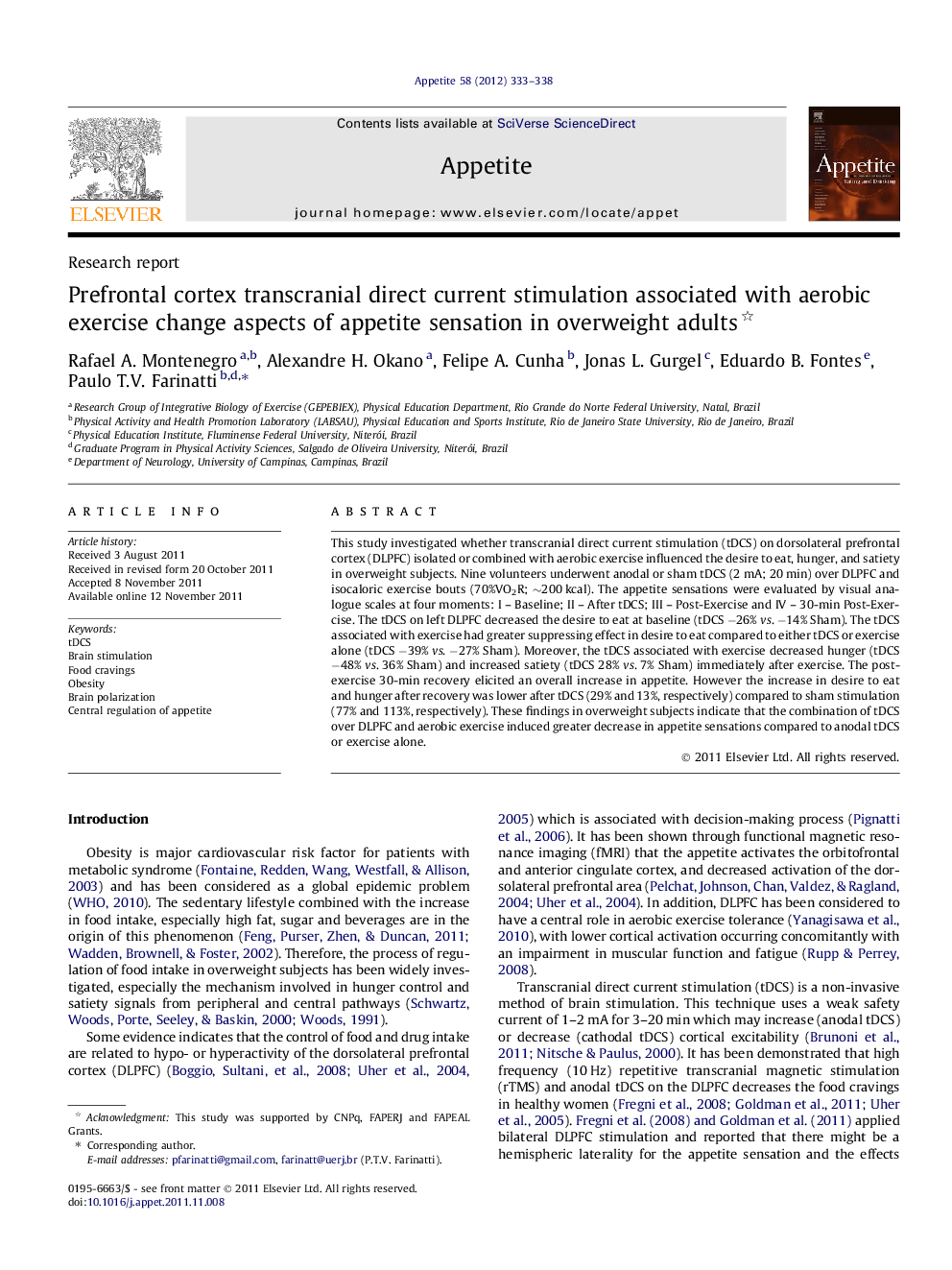| Article ID | Journal | Published Year | Pages | File Type |
|---|---|---|---|---|
| 940363 | Appetite | 2012 | 6 Pages |
This study investigated whether transcranial direct current stimulation (tDCS) on dorsolateral prefrontal cortex (DLPFC) isolated or combined with aerobic exercise influenced the desire to eat, hunger, and satiety in overweight subjects. Nine volunteers underwent anodal or sham tDCS (2 mA; 20 min) over DLPFC and isocaloric exercise bouts (70%VO2R; ∼200 kcal). The appetite sensations were evaluated by visual analogue scales at four moments: I – Baseline; II – After tDCS; III – Post-Exercise and IV – 30-min Post-Exercise. The tDCS on left DLPFC decreased the desire to eat at baseline (tDCS −26% vs. −14% Sham). The tDCS associated with exercise had greater suppressing effect in desire to eat compared to either tDCS or exercise alone (tDCS −39% vs. −27% Sham). Moreover, the tDCS associated with exercise decreased hunger (tDCS −48% vs. 36% Sham) and increased satiety (tDCS 28% vs. 7% Sham) immediately after exercise. The post-exercise 30-min recovery elicited an overall increase in appetite. However the increase in desire to eat and hunger after recovery was lower after tDCS (29% and 13%, respectively) compared to sham stimulation (77% and 113%, respectively). These findings in overweight subjects indicate that the combination of tDCS over DLPFC and aerobic exercise induced greater decrease in appetite sensations compared to anodal tDCS or exercise alone.
► Anodal tDCS on left DLPFC did not change hunger and satiety sensations. ► Anodal tDCS on left DLPFC was sufficient to decrease the desire to eat at rest. ► Aerobic exercise alone influenced the appetite sensation during recovery. ► Anodal tDCS associated with exercise enhanced the appetite suppressing effect.
